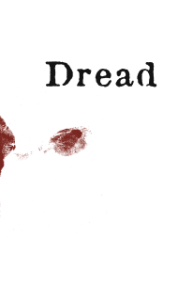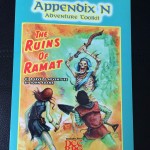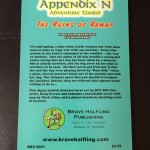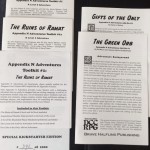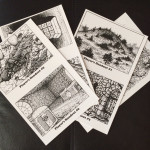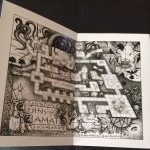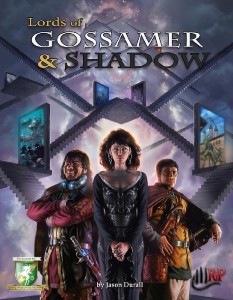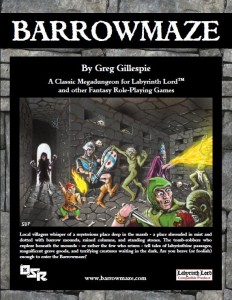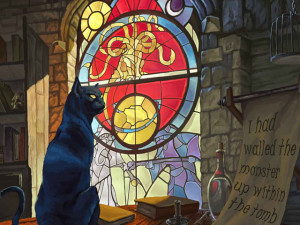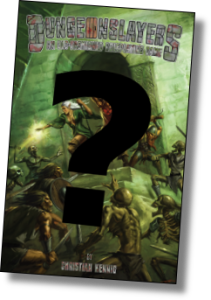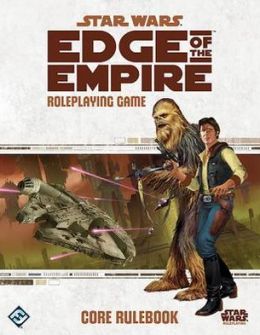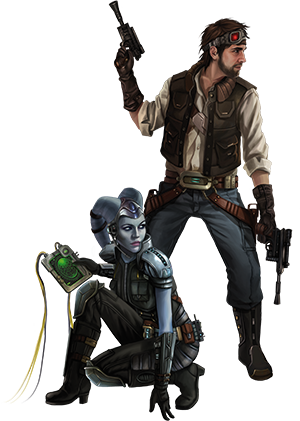 In your campaign, do you flavor your magic? When a spell is cast is there some attempt to color the casting of it by description. Are they an interconnected style of casting like wisps shadows for necromancers, sparks of energy from an evocation specialists, rainbows of color falling from the illusionists hands. Do you allow the players to build up their own evocative descriptions of their casting of spells or does your table just use the spells as written?
In your campaign, do you flavor your magic? When a spell is cast is there some attempt to color the casting of it by description. Are they an interconnected style of casting like wisps shadows for necromancers, sparks of energy from an evocation specialists, rainbows of color falling from the illusionists hands. Do you allow the players to build up their own evocative descriptions of their casting of spells or does your table just use the spells as written?
Creating an immersive environment in a game relies on a lot more than just running an interesting plot or using interesting NPC’s, creatures and other threats. To provide an environment that helps the player lose themselves to the visualization it is often best to incorporate as many senses in your descriptions at once. Especially around the idea of magic in a Fantasy campaign as magic is often the backbone to a Fantasy campaign.
I always try to add something to my descriptions of a spell being cast. There is little of interest in simply saying “the mage reaches out and casts web”. Instead flavoring it produces a much more immersive environment like “the mage thrusts out his hand and a wad of sticky strands hurtle forward spinning outward causing a web to emerge as it grasps at your body”. Sure it takes more effort and a few more words but those words are worth so much more to the part of your players mind that is currently trying to visualize the action. It makes it real to them in a sense and they will easily become immersed in it.
But now my challenge is to take this technique and take it a little further. There is much more magic in the world apart from our mages. Take the cleric’s spells and energy channelling powers. How would their gods want this power to appear and manifest? Is it pure light of divinity or the whiff of sulfur from the pit. Rite Publishing’s Secrets of Adventuring offers up a really good level of information for the channelling powers of the cleric giving the appearance, sounds and senses involved as the cleric channels (in fact they make a new class called the Divine Channeler which is pretty damn cool).
But even further from this is the idea of magic items! Does the sword glow when it’s magic is operational? Does the ring clamp onto the finger tightly so that it cannot be removed easily? What about the robe of the archmagi? Such a powerful item surely exhibits some kind of behavior different to the robes of the other mages. perhaps it is self cleaning or powers a stronger aura for the wearer.
Fantasy games almost inevitably have the themes of magic right through them. There are magic poor fantasy worlds and games but there are very few (in fact I can’t think of one) if any fantasy games that do not address magic in the game. My suggestion to you as the GM is to think about how that should manifest in the game. You may want to make it complicated and ritualistic and layer every type of magic with a different appearance and feel or keep it a little more simple and simply have a few standard ideas to run with. But make sure you do do it. It makes the story and game that much more believable and immersive for your players.
Getting your players into a game can be difficult, keeping them playing week to week is another skill. You will have rules lawyers that will want to discuss the specifics of a spells description but that does not mean you can’t flavor it all up with some nice descriptive words first. Get the description right and then look at the detail. That way the more theatrical players will have their minds engaged while the more factual players can concentrate on the nuts and bolts.
A GM has to come to the table armed with a lot of skills. You are a relationship manager, a rules expert, an actor, an improviser and above all else you are the players senses in this imaginary world. Play that up and I guarantee you will make a stronger game and your players will love the approach of game time. Of course it is hard to get right all the time, but just try and with practice you will find this all happening automatically for you. Until next time, Keep rolling!
Mark Knights is 39 year old guy living in a small rural town called Elliott in Tasmania, Australia. I have been role playing since I was 11 years old playing the original versions of Dungeons and Dragons, MERP, Elric, Dragon Warriors and the like amongst other genre games. I played D&D 2nd Edition through the 90′s but I ran Earthdawn for my fantasy setting and loved it as a GM. When 3rd Edition came out for D&D I tried it but found it too heavy on rules. I ignored the 3.5 edition of DnD in favour of Earthdawn (big mistake) as I thought it was just a money spinner. When 4th Edition DnD came on my players and I gave it a red hot go but hated what it had dumbed the game down to be. On a trip to Melbourne to buy some 4E stuff from a hobby store an old mate of mine pointed me at Pathfinder and in a Fantasy setting I have never looked back.

